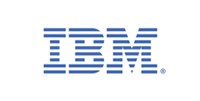
Get ready to enter the thriving field of Information Technology (IT), with job ready skills! This beginner friendly course provides the core hardware and operating system knowledge needed by anyone new to IT and computer hardware who wants to start a new career in technology, including IT Support, Networking, Cybersecurity, and Software Development.
Read more
Get ready to enter the thriving field of Information Technology (IT), with job ready skills! This beginner friendly course provides the core hardware and operating system knowledge needed by anyone new to IT and computer hardware who wants to start a new career in technology, including IT Support, Networking, Cybersecurity, and Software Development.
Get ready to enter the thriving field of Information Technology (IT), with job ready skills! This beginner friendly course provides the core hardware and operating system knowledge needed by anyone new to IT and computer hardware who wants to start a new career in technology, including IT Support, Networking, Cybersecurity, and Software Development.
You will first be introduced to computing fundamentals, the four functions of computing, and the benefits of computing. You will become knowledgeable of internal computer components, including motherboards, central processing units (CPUs), memory, hard drives, expansion slots, and others. Learn to identify interfaces, ports, connectors, and peripherals.
You will become familiar with tasks that IT professionals perform; including workstation procurement, workstation setup processes, configure commonly used operating system settings & screen capture commands, computer acquisition practices, and job-essential troubleshooting processes.
By the end of this course, you will become knowledgeable about hardware and operating systems, mobile operating systems, interfaces and connectors, Linux, and macOS. Throughout the course you will practice what you learn using interactive exercises and hands-on labs. At the end of the course, you will have the opportunity to complete a final project where you will apply your understanding of course content.
This course is also part of the series to help you prepare for CompTIA ITF+ and A+ certification exams.
What's inside
Syllabus
Introduction to Computing Fundamentals
Welcome to your first module! After completing this module, you’ll be able to define what a computer is. You’ll learn about the four functions of computing, the parts of a computer associated with each of those functions, and the benefits of computing. Explore how to classify computing devices based on size and usage and describe the evolution of operating systems. Discover how computers communicate using notational (numeric) systems for processing and storing data, displaying onscreen text, hardware addresses, website colors, and web addresses. You’ll gain the practical knowledge needed to evaluate computing performance and storage. You’ll know the four ways to log into Microsoft Windows, be able to describe how to use the Start menu, Tiles, taskbar, and settings capabilities, and will be able to explain how to manage Windows on the desktop. You’ll round out your week with a lab where you’ll locate programs and navigate Windows to find important information about the computer and the Windows operating system.
Read more
Syllabus
Good to know
Save this course
Activities
Review Basic Mathematics and Logic Concepts
Show steps
Strengthens foundational skills in mathematics and logic, essential for problem-solving in computer science.
Browse courses on
Algebra
Show steps
-
Review algebra concepts such as variables, equations, and functions.
-
Practice solving logical puzzles and reasoning problems.
Compile a Glossary of Essential Computer Science Terminology
Show steps
Enhances understanding of fundamental concepts and terminology used in computer science.
Show steps
-
Identify key terms and concepts covered in the course.
-
Define and explain each term in clear and concise language.
Practice Reading and Writing Binary Numbers
Show steps
Reinforces understanding of binary number system, essential for computer science.
Browse courses on
Binary Numbers
Show steps
-
Solve practice problems converting from binary to decimal and vice versa.
-
Create a table summarizing the binary number system.
Five other activities
Expand to see all activities and additional details
Show all eight activities
Create a Diagram of a Computer System
Show steps
Enhances understanding of the components and their interconnections within a computer system.
Browse courses on
Computer Architecture
Show steps
-
Identify the major components of a computer system, such as CPU, memory, storage, and input/output devices.
-
Draw a diagram representing the connections and data flow between these components.
Attend a Meetup Group for IT Professionals
Show steps
Provides opportunities to connect with professionals in the field, learn about industry trends, and expand networking circle.
Show steps
-
Identify and join a Meetup group focused on IT and computer science.
-
Attend regular meetings and engage in discussions and networking activities.
Attend a Workshop on Computer Hardware Maintenance
Show steps
Provides practical hands-on experience in troubleshooting and repairing computer hardware.
Browse courses on
Computer Hardware
Show steps
-
Register for a workshop on computer hardware maintenance.
-
Attend the workshop and actively participate in the hands-on activities.
Volunteer at a Local Computer Repair Shop
Show steps
Provides practical experience in diagnosing and resolving computer hardware and software issues.
Browse courses on
Troubleshooting
Show steps
-
Contact a local computer repair shop and inquire about volunteering opportunities.
-
Assist technicians with diagnosing and repairing computer systems.
Contribute to an Open-Source Software Project
Show steps
Provides hands-on experience in software development, collaboration, and open-source principles.
Browse courses on
Software Development
Show steps
-
Identify an open-source software project that aligns with your interests.
-
Contribute to the project by fixing bugs, adding features, or improving documentation.
Review Basic Mathematics and Logic Concepts
Show steps
Strengthens foundational skills in mathematics and logic, essential for problem-solving in computer science.
Browse courses on
Algebra
Show steps
- Review algebra concepts such as variables, equations, and functions.
- Practice solving logical puzzles and reasoning problems.
Compile a Glossary of Essential Computer Science Terminology
Show steps
Enhances understanding of fundamental concepts and terminology used in computer science.
Show steps
- Identify key terms and concepts covered in the course.
- Define and explain each term in clear and concise language.
Practice Reading and Writing Binary Numbers
Show steps
Reinforces understanding of binary number system, essential for computer science.
Browse courses on
Binary Numbers
Show steps
- Solve practice problems converting from binary to decimal and vice versa.
- Create a table summarizing the binary number system.
Create a Diagram of a Computer System
Show steps
Enhances understanding of the components and their interconnections within a computer system.
Browse courses on
Computer Architecture
Show steps
- Identify the major components of a computer system, such as CPU, memory, storage, and input/output devices.
- Draw a diagram representing the connections and data flow between these components.
Attend a Meetup Group for IT Professionals
Show steps
Provides opportunities to connect with professionals in the field, learn about industry trends, and expand networking circle.
Show steps
- Identify and join a Meetup group focused on IT and computer science.
- Attend regular meetings and engage in discussions and networking activities.
Attend a Workshop on Computer Hardware Maintenance
Show steps
Provides practical hands-on experience in troubleshooting and repairing computer hardware.
Browse courses on
Computer Hardware
Show steps
- Register for a workshop on computer hardware maintenance.
- Attend the workshop and actively participate in the hands-on activities.
Volunteer at a Local Computer Repair Shop
Show steps
Provides practical experience in diagnosing and resolving computer hardware and software issues.
Browse courses on
Troubleshooting
Show steps
- Contact a local computer repair shop and inquire about volunteering opportunities.
- Assist technicians with diagnosing and repairing computer systems.
Contribute to an Open-Source Software Project
Show steps
Provides hands-on experience in software development, collaboration, and open-source principles.
Browse courses on
Software Development
Show steps
- Identify an open-source software project that aligns with your interests.
- Contribute to the project by fixing bugs, adding features, or improving documentation.
Career center
Computer and Information Systems Manager
Information Security Analyst
Computer Support Specialist
Systems Engineer
IT Project Manager
Software Developer
Web Developer
Database Administrator
Network Administrator
Computer Hardware Engineer
Systems Analyst
IT Auditor
Business Analyst
Project Manager
Teacher
Reading list
Share
Similar courses
OpenCourser helps millions of learners each year. People visit us to learn workspace skills, ace their exams, and nurture their curiosity.
Our extensive catalog contains over 50,000 courses and twice as many books. Browse by search, by topic, or even by career interests. We'll match you to the right resources quickly.
Find this site helpful? Tell a friend about us.
We're supported by our community of learners. When you purchase or subscribe to courses and programs or purchase books, we may earn a commission from our partners.
Your purchases help us maintain our catalog and keep our servers humming without ads.
Thank you for supporting OpenCourser.



